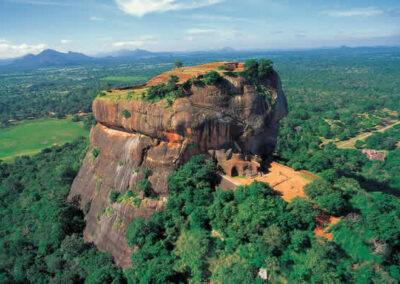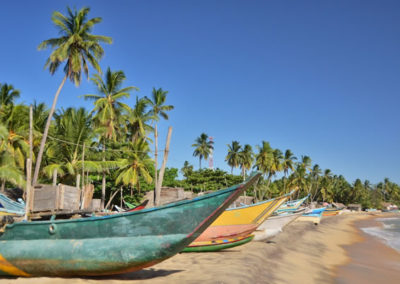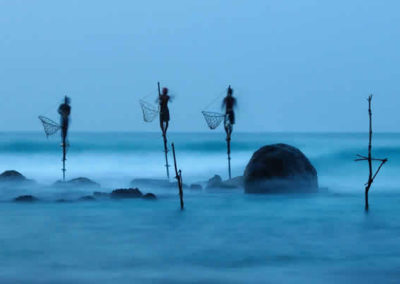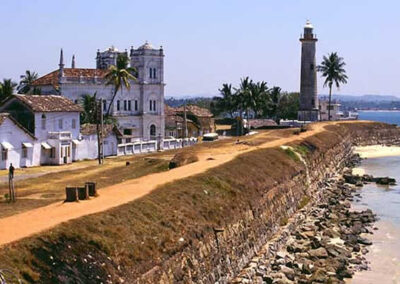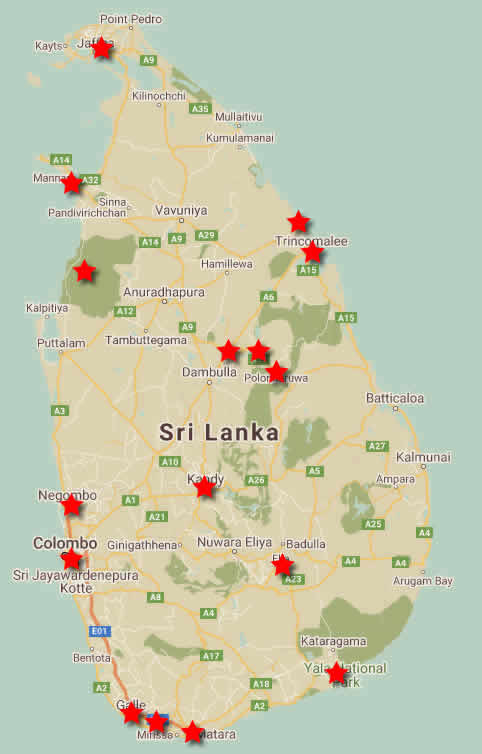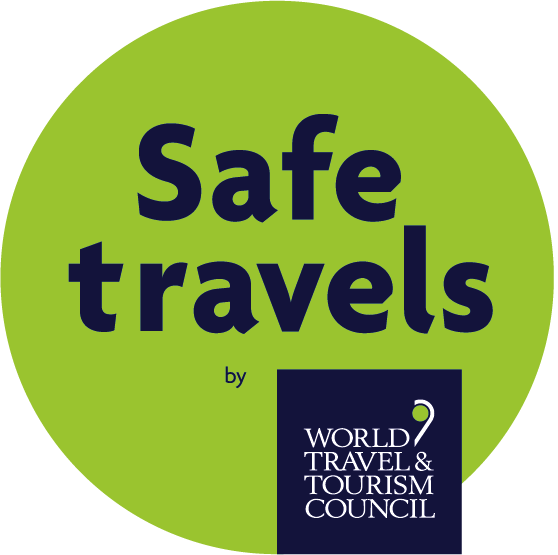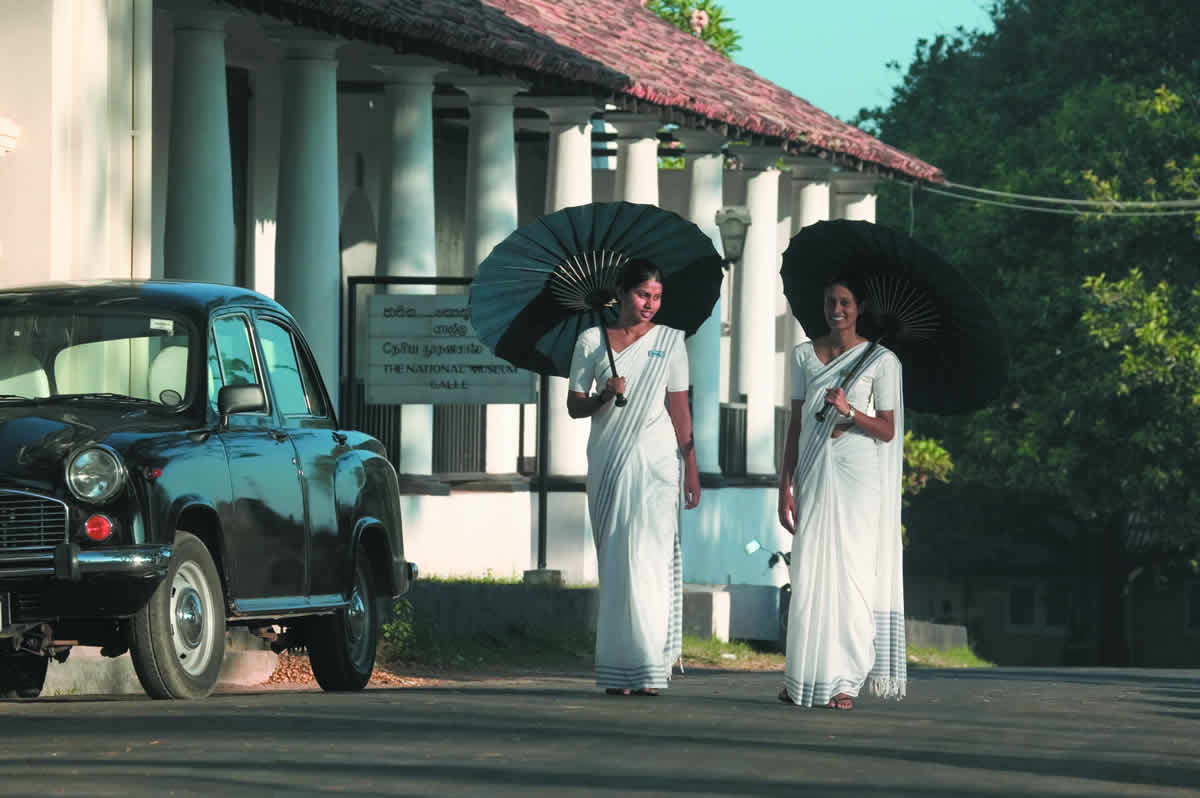
DUTCH HERITAGE SRI LANKA TOUR
18 Days
This Special Dutch Heritage Sri Lanka Tour includes the West, South, East and North Coast and focuses on the iconic Dutch Heritage that can be seen in 300-year-old forts along the coast, in the churches, forts and homes of Galle, a remarkably preserved UNESCO World Heritage Site built entirely within walls and ramparts, and in the magnificent public buildings, churches and private houses in many of the coastal areas.
When the Dutch sailed their ships to Ceylon’s waters, trade followed the flag, however, faith preceded it. The heritage of the Dutch Reform Church. They built many churches from Point Pedro to Dondra Head and the Wolvendaal Church they built on Wolvendaal Hill in Kotahena in 1749 survives to this day.
The Old Dutch Governor’s House is a two-storied building built by Thomas Van Rhee, the Dutch Governor of Sri Lanka from 1692 to 1697. Today it is a Dutch Museum, displaying over 3,000 objects of the Dutch period. The Dutch also built a network of waterways, and canals to expedite the transport of cargo. The canal from Puttalam to Colombo, the Hamilton Canal, is over 80 miles long.
HIGHLIGHTS: WEST, SOUTH, EAST AND NORTH COAST OF SRI LANKA – WILDLIFE SAFARI – SCENIC TRAIN JOURNEY – UNESCO HERITAGE SITES – TOP BEACHES – WHALE WATCHING – LOCAL EXPERIENCES
FULLY CUSTOMIZABLE
for more details and all available options contact us:
Mobile/WhatsApp/Viber/Imo : 0094 773 866 315
b2b@sri-holidays.com
SEE DETAILED PRIVATE SRI LANKA BUDGET TOUR ITINERARY HERE
Tour Overview
- 18 Days Private Guided Sri Lanka Tour
- UNESCO Heritage Sites
- Scenic Train Journey
- For all Age Groups – For all Group Sizes
- Special Packages for Solo Travellers are available
- Private Transportation with an experienced chauffeur guide
- Fully Customizable
- 24/7 Customer Hotline
- Dolphin/Whale Watching
starting at US$ 1.400.-
Dutch Heritage Sri Lanka Tour Itinerary
DAY 1
Airport – Negombo
Arrive at the Bandaranayake International Airport and transfer to the first hotel in Negombo. In the afternoon go on a boat ride tour through the Dutch canal. The boat ride/safari that takes you along the old Dutch canal which runs through Waikkal, gives you snapshots of birdlife, essentially comprising waders, stunning kingfishers, rare pied kingfishers, bee-eaters, Brahminy kites, etc. Water monitors, bearing an uncanny resemblance to crocodiles, are also bound to make an appearance, so keep your eye out for a glimpse! You can prolong your boat journey by following the canal onto the sea.
Overnight at the Goldi Sands Hotel, Negombo
DAY 2
Negombo – Colombo – Negombo
After breakfast leave for Colombo. Visit the Dutch Hospital and Dutch Church. Built as a hospital by the Dutch, it has been used for several different purposes, over the years. It is believed to have existed since 1681, as recorded by German Christoper Schweitzer. The Dutch established the Colombo hospital to look after the health of the officers and other staff serving under the Dutch East India Company. The hospital’s close proximity to the harbor allowed it to serve Dutch seafarers.
The Dutch word Wolvendaal means the ‘Dale of Wolves’ and it relates to an area outside the Fort of Colombo in Sri Lanka which was in the 17th century covered with swamps and marshland. Animals identified as wolves (in fact they were jackals!) used to roam here unhindered. In the middle of this area, on a hill overlooking Colombo, stands the majestic Wolvendaal Church. Built in 1749, it is one of the oldest Protestant churches still in use on the island and is considered one of the most beautiful and historically interesting churches of South Asia. Proceed back to your hotel.
Overnight at the Goldi Sands Hotel, Negombo
DAY 3
Negombo – Wilpattu – Mannar
After breakfast leave for Mannar. On the way visit the Wilpattu National Park. Wilpattu National Park (Willu-pattu; Land of Lakes) is a park located on the island of Sri Lanka. The unique feature of this park is the existence of “Willus” (Natural lakes) – Natural, sand-rimmed water basins or depressions that fill with rainwater. Located in the Northwest coast lowland dry zone of Sri Lanka. The park is located 30 km west Anuradhapura and located 26 km north of Puttalam (approximately 180 km north of Colombo). The park is 1,317 square kilometers (131, 693 hectares) and ranges from 0 to 152 meters above sea level. Nearly sixty lakes (Willu) and tanks are found spread throughout Wilpattu. Wilpattu is the largest and one of the oldest National Parks in Sri Lanka. Wilpattu is among the top national parks world-renowned for its leopard (Panthera pardus kotiya) population. A remote camera survey was conducted in Wilpattu from July to October 2015 by the Wilderness & Wildlife Conservation Trust. A sample of forty-nine individual leopards was photo-captured in the surveyed area and the core area density was between that of Yala National Park’s Block I and Horton Plains National Park. Proceed to Mannar.
Overnight at the Palmyrah House, Mannar
DAY 4
Mannar
Breakfast at the hotel. Today you will be visiting the Mannar Fort. The fort was built by the Portuguese in 1560, they surrendered to the Dutch on 22 February 1658, and the fort was rebuilt by them in 1686. On 5 October 1795, the Dutch surrendered to the British. The fort has four bastions and it’s still in good condition and is intact, though the interior is largely destroyed.
Overnight at the Palmyrah House, Mannar
DAY 5
Mannar – Jaffna
After breakfast leave for Jaffna. Visit the Jaffna Fort. The Portuguese built in 1560 the fortress of Nossa Senhora dos Milagres. Jaffna was the last place in Portuguese hands in Ceylon, they lost it in 1658. The Dutch strengthened the fort in 1680. The old Dutch fort, of considerable size, with its ramparts, bastions, and gateways was still in good preservation before the civil war. Within it was the Governor’s residence and the Dutch church (Kruys Kerk or Grooteker) dated 1706 inside there were beautiful tombstones. In the Jaffna peninsula, there are (or better there were) the remains of several Portuguese-Jesuits churches at Chankanai (1641), Atchuveli, Myliddi, Vaddukoddai. A Dutch church is (was) at Chundikuli.
Overnight at the North Gate Hotel, Jaffna
DAY 6
Jaffna
Breakfast at the hotel. Visit the Fort Hammenhiel. Standing on a rock at the entrance to Jaffa lagoon and surrounded on all sides by the sea; Hammenhiel stood on the north, guarding the passage by water to the Key Fort in Jaffa. Built initially by the Portuguese in the seventeenth century on a small island between the island of
Kayts and Karaitiu of Jaffa Peninsula, Fort Hammenhiel was later captured, rebuilt, and renamed by the Dutch in memory of a ‘heel of the ham’. In recent history, it served as a correction facility for naval personnel but had been refurbished into a resort and restaurant where Old Dutch prison cells had been converted into rooms to provide a prison cell experience.
Overnight at the North Gate Hotel, Jaffna
DAY 7
Jaffna – Trincomalee
After breakfast leave for Trincomalee. You will visit Fort Fredrick, also known as Trincomalee Fort or Fort of Triquillimale, is a fort built by Portuguese colonials at Trincomalee, Eastern Province, Sri Lanka, completed in 1624 CE, built on Swami Rock-Konamamalai from the debris of the world-famous ancient Hindu Koneswaram temple (Temple of a Thousand Pillars). The temple was destroyed by the Portuguese colonial Constantino de Sá de Noronha under Phillip III, the occupier of the Jaffna kingdom and Malabar country on the island. On the Konamalai cape was also built a new village of Portuguese and Tamil people, 50 Portuguese soldiers, and inside the fort, a church named after “Nossa Senhora de Guadalupe”. The Fort of Triquillimale was dismantled and rebuilt by the Dutch in 1665, renamed Fort Fredrick.
Overnight at the Trinco Blu Hotel, Trincomalee
DAY 8
Trincomalee
After breakfast leave for Pigeon Island. Pigeon Island National Park is one of the two marine national parks of Sri Lanka. The national park is situated 1 km off the coast of Nilaveli, a coastal town in Eastern Province, encompassing a total area of 471.429 hectares. The island’s name derives from the rock pigeon which has colonized it. The national park contains some of the best remaining coral reefs of Sri Lanka. Pigeon Island was designated as a sanctuary in 1963. In 2003 it was redesignated as a national park. This national park is the 17th in Sri Lanka. The island was used as a shooting range during the colonial era. Pigeon Island is one of the several protected areas affected by the Indian Ocean tsunami in 2004. Proceed back to your hotel.
Overnight at the Trinco Blu Hotel, Trincomalee
DAY 9
Trincomalee – Polonnaruwa – Hiriwaduna – Sigiriya
After breakfast leave for Sigiriya. On the way visit the Polonnaruwa Heritage City. The second most ancient of Sri Lanka’s kingdoms, Polonnaruwa was first declared the capital city by King Vijayabahu I, who defeated Chola invaders in 1070 to reunite the country once more under a local leader. In Polonnaruwa you can see traces of a great kingdom that once existed and was historically valuable in Sri Lanka. Today the ancient city of Polonnaruwa remains one of the best-planned archaeological relic cities in the country, standing testimony to the discipline and greatness of the Kingdom’s first rulers. The ancient city of Polonnaruwa has been declared a World Heritage site by UNESCO.
Next visit a traditional local village. Hiriwaduna is just 02 Km (05 minutes – drive from Sigiriya, Trek through the archetypal Sri Lankan Typical village. The trek begins with an awesome walk along a bund of a Wewa or manmade reservoir. The reservoir itself, the surrounding scrub jungle, marshland, and village are a hive of early morning or evening activity. The amazing birdlife, butterflies, and possible sightings of crocodiles only add to the charm of seeing the villagers as they go about their early morning tasks of fishing, or washing clothes at the periphery of the lake. Initially one wades through a shallow stream and thereafter crosses a wider tributary in a catamaran of an obliging farmer to inspect Chena cultivation (slash and burn agriculture). Enjoy the farmer’s humble hospitality. With the guidance of the farmer, pick some fresh vegetables from the plot and join in the preparation of a simple meal prepared in the traditional method using earthenware pots and firewood as fuel.
This is a great opportunity to sample the authentic local cuisine. The journey continues through dense shrub forests, home to many forest birds and other wildlife including monkeys, bears, pythons, and even elephants. In Hiriwaduna you can do a bicycle trip, oxcart trip, or boat trip. Proceed to Sigiriya.
Overnight at the Kassapa Lions Rock Hotel, Sigiriya
DAY 10
Sigiriya
In the morning climb the UNESCO World Heritage site Sigiriya Rock, part of Sri Lanka’s ‘Cultural Triangle’, where you will have a chance to gaze over the stunning views of Central Sri Lanka. Sigiriya (sometimes called Lion’s Rock) is the ruins of an ancient palace in a 200m high rock fortress, overlooking the beautiful plains of North-Central Sri Lanka. Built for an exiled Indian prince, the breath-taking ruins are one of Sri Lanka’s main tourist attractions and date back to AD 477. Despite its age, Sigiriya still retains much of its former beauty and features some of the finest examples of ancient art in the form of wall paintings, as well as a network of attractive gardens and reservoirs, and Sigiriya’s namesake – a gigantic pair of lion’s paws cut into the rock. With its fascinating history and unerring beauty, Sigiriya is often referred to as the 8th wonder of the world and the UNESCO-sponsored Central Cultural Fund has even restored Sigiriya’s 5th century Water Gardens, so that you can get a glimpse of what Sigiriya might have been like thousands of years ago.
Overnight at the Kassapa Lions Rock Hotel, Sigiriya
DAY 11
Sigiriya – Matale – Kandy
After breakfast leave for Kandy. On the way visit the Spice Garden in Matale. During past history, Sri Lanka known as Taprobane, was world-renowned for its Quality Spices. In the 16th century Ceylon, as it was then known, was discovered by the Portuguese who soon began trading in cinnamon and other spices. The Dutch and British followed bringing with them their own history and influences, forming a strong Western presence that created a history of food expressed with spices that can be tasted in the dishes today. Spices are an essential element of the cuisine of Sri Lanka and the Ayurvedic tradition and a visit to a garden specializes in the cultivation of these substances and is an excellent way for purposes of new uses of certain ingredients that perhaps they knew well. Find cinnamon, cloves, nutmeg, vanilla, cardamom, and black pepper, to name a few. Europeans can buy the products in their natural state or in the form of oils and potions that are used by Ayurvedic medicine, during the Dutch, very famous spices of Sri Lanka. Proceed to Kandy.
Visit the Temple of the Tooth Relic in Kandy. Sri Dalada Maligawa in Kandy is the most prominent and sacred Buddhist shrine in Sri Lanka, even in the world. The relic of the tooth is kept in a two-story inner shrine fronted by two large elephant tusks. The relic rests on a solid gold lotus flower, encased in jeweled caskets that sit on a throne. The temple is joined to the Pattiripuwa (Octagon) tower, built in 1803, which was originally a prison but now houses a collection of palm-leaf manuscripts. The king’s palace is also in the temple compound.
Overnight at the Suisse Hotel, Kandy
DAY 12
Scenic Train Ride Kandy – Ella
The train journey from Kandy to Ella is the most beautiful train ride in Sri Lanka, if not in the world! Board the train and experience breathtaking views of lush green tea plantations, mountains, viaducts, valleys, and dense jungle. What’s more, it’s the perfect way to experience Sri Lankan life. Meet smiling locals on the train, wave to the running children along the tracks, and eat the spicy snacks sold by vendors who board at each stop. The route takes you through tea plantations, jungles, and mountains. As the journey goes on, you move into the lush green highlands, dotted with tea plantations, beautiful hilltop villages, and waterfalls. The train was brought to life in the mid-1800s when Sri Lanka was under British colonial rule. During this time, it was used as a train to transport tea from the plantations to Colombo, where it would then be exported internationally.
Ella is a small village located among the peaks of Sri Lanka’s central highlands. This sleepy village is nestled in a valley peering straight through the Ella Gap to the plain nearly 1000m below and across to the coastline. Apart from the mesmerizing natural views, ELLA is surrounded by hilly countryside perfect for walks; through tea plantations, waterfalls, ancient temples, and artifacts. This hidden sanctuary with the perfect climate is probably one of the best-kept secrets of the country and is easily accessible from the comfort of your hotel in Ella.
Overnight at the morning Dew Hotel, Ella
DAY 13
Ella
Breakfast at the hotel. Today you will go sightseeing in Ella. Visit the Little Adam’s Peak & Nine Arches Bridge.
Whether considering the word ‘Little’, it is named after the sacred Adams Peak (Sri Pada –where the footprint of Lord Buddha is preserved) regarding the similarity between the two mountains. Therefore the mountain was called Little Adams Peak. It is 1141 m in height. Little Adam’s Peak attracts many travelers who come to Sri Lanka. Gradually with an easy hike up to the mountain of Little Adams Peak, you can have excellent panoramic views. You have to walk through lush green tea plantations, waterfalls, and paddy fields while enjoying the scenery. It will be priceless if you can visit the place in the morning when the clouds roll in. It will feel like a neck exercise for the visitors as you have to rotate your body to seek the views outstanding for 360 degrees.
The Nine Arches Bridge also called The Bridge in the Sky is one of the most iconic bridges in Sri Lanka and is one of the best examples of British railway constructions when Ceylon was yet a colony of the British Empire. It is located in Demodara, between Ella and Demodara railway stations. As of the past decade, the surrounding area has seen a steady increase in tourism due to the bridge’s architectural ingenuity and the profuse greenery on the nearby hillsides. Loosely founded, albeit popular rumors suggest that when construction work commenced on the bridge, the Great War began between the empires of Europe, and the steel consignment assigned for this site was reallocated to Britain’s War-related projects at the battlefront. As a result, when the work came to a standstill the locals came forward and built the bridge with solid stone bricks and cement without steel.
Overnight at the morning Dew Hotel, Ella
DAY 14
Ella Yala National Park
After breakfast leave for Yala. On the way visit the Ravana Waterfall. This waterfall measures approximately 25 m (82 ft) in height and cascades from an oval-shaped concave rock outcrop. During the local wet season, the waterfall turns into what is said to resemble an areca flower with withering petals. But this is not the case in the dry season when the flow of water reduces dramatically. The falls form part of the Ravana Ella Wildlife Sanctuary and are located 6 km (3.7 mi) away from the local railway station at Ella. Proceed to Yala.
Visit the Yala National Park. Yala National Park is famously known for its highest concentration of leopards in the world and this is the second largest national park in Sri Lanka. The park is primarily a shrub jungle with rocky outcrops that dot the park, along with several salt and fresh water lagoons. Rain is received mainly during the northeast monsoon usually from May to September. At the Yala national park visitors can see leopards, elephants, sloth bears, Sambar, and spotted deer, jackal, mongoose, wild boar, wild buffaloes, langur, and macaque monkeys. Yala is also famous for its bird life. There are around 130 species of birds that have been spotted at the premises including black-necked stork, sandpipers, pelicans, egrets, hoopoes, parakeets, and bulbuls. One could spot peacocks as soon as they enter the park, unlike the evasive jungle fowl, the national bird of Sri Lanka.
Overnight at the Hibiscus Garden Hotel, Tissa
DAY 15
Yala – Dondra – Matara – Thalpe
After breakfast leave for Thalpe. On the way visit the Dondra Head Lighthouse and Matara Fort. Dondra Head Lighthouse was designed by Sir James Nicholas Douglass, with construction, by William Douglass of the Imperial Lighthouse Service, commencing in November 1887. All the building materials including the bricks and steel were imported from England. The granite rock was supplied from quarries at Dalbeattie in Scotland and Penryn in Cornwall. The lighthouse was completed and commissioned in March 1890.
Matara Fort was built by the Portuguese about 1550 but the actual fort was built by the Dutch when they took Matara, after the capture of Galle. The remains of the fort (a rampart and a gateway) are in good preservation.
Inside the fort there are several old Dutch houses and a church with a gravestone on the floor dating from 1686.
After the Matara rebellion in 1761-1762, a beautiful fort called redoubt “Van Eck” was built in 1763-1765, on the right bank of the river. This fort is the unique star-shaped fort in Ceylon, over the gate of the fort is the Dutch coat of arms. It’s still in good preservation. Proceed to Thalpe.
Overnight at the Apa Villa, Thalpe
DAY 16
Thalpe – Galle – Thalpe
After breakfast visit the Galle Fort. Galle is a bustling provincial capital and administrative center for the South.
Once a port, Galle was Sri Lanka’s first international commerce and trade center, and the streets are still awash with a cosmopolitan range of goods available to buy in exotic markets and quirky art galleries. The Dutch presence is still visible in Galle, and should you want to retrace the footsteps of the Dutch rule, let our guide give you the tour of the Old Dutch fort (a UNESCO World Heritage site), the Dutch Government House, the former New Oriental Hotel (built in 1684), the old bell tower, and the Dutch tide-based sewage system. Proceed back to your hotel.
Overnight at the Apa Villa, Thalpe
DAY 17
Thalpe
Breakfast at the hotel. Day to relax on the beach or to explore the nearby village.
Overnight at the Apa Villa, Thalpe
DAY 18
Thalpe Airport
After breakfast transfer back to the airport.
END OF DUTCH HERITAGE SRI LANKA TOUR
BOOK WITH CONFIDENCE!
We are physically based in Sri Lanka and our 24/7 customer hotline is always available to you. The straightforward Online Reservation System, friendly, multilingual staff and no hidden costs are only some of the benefits you experience when booking your vacation with lanka2book.
Feel free to contact us with any questions you might have.
Mobile/WhatsApp : 0094 773 866 315
SAFE & SECURE CERTIFIED
Book Dutch Heritage Sri Lanka Tour 18 Days
2 PAX – USD 1.500 pp
4 PAX – USD 1.450 pp
6 PAX – USD 1,400 pp
Mobile/WhatsApp : 0094 773 866 315
b2b@sri-holidays.com
Availability
Tour Includes
- Accommodation with Half-Board (HB) as mentioned in the itinerary
- Train Tickets
- Private transportation for 18 days
- Experienced, English-speaking chauffeur guide
- Transport by fully insured a/c vehicle by Sri Lanka Insurance Corporation Ltd
Tour Excludes
- Entrance Fees
- Anything not specified in the package inclusions
- Meals other than specified
- Items of personal nature
- Tipping and porterage
our booking terms & conditions can be found here…
Please be advised that most hotels charge a compulsory supplement for Christmas Eve / New Year and on important local or school holidays. If your travel falls within one of these periods, we will inform you accordingly.
We are no automated booking engine! All enquiries and reservations are handled by a real person; a dedicated Sri Lanka specialist who will offer unbiased advice, guide you through the reservation process and assists you during your holiday (whenever needed) as well.


